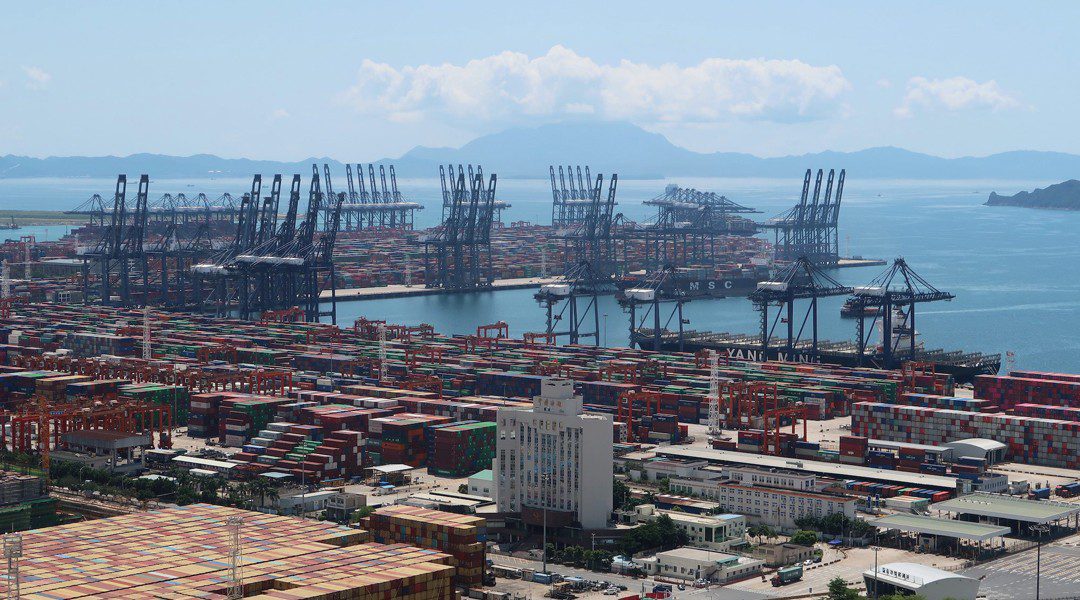In response to the U.S. Trade Representative’s (USTR) port fees effective October 14, China has announced countermeasures, imposing special port fees on relevant U.S. vessels, which will take effect on the same day.
China is the largest market for the shipping industry. Preliminary analysis by Clarksons Research suggests the potential impact of China’s port fees on the shipping industry is expected to be broader than that of the USTR fees, affecting multiple major shipping markets. Beyond manufacturing-related vessel types, the impact on bulk carriers and tankers has increased significantly.
Clarksons Research continuously publishes a series of update reports to track hot topics in the shipping market and provide clients with the latest market information. For past reports, see the push notifications: Hot Topic Tracking – Tariffs, Sanctions, Environmental Protection…, High-Frequency Data Regularly Tracks Impact of US Policies, US Ship Act – Shipping and Shipbuilding Restrictions Escalate Again.
Subscribers to the Clarksons Research database and Chinese report modules can access and download reports via the Shipping Intelligence Network.
US-Related Vessels – Potential Scope of Impact
Based on vessel particulars statistics in the Clarksons Research database for “US-related” vessels, an estimated 7,000-9,000 vessels in the current fleet potentially fall within the scope of China’s new levy. However, considering that most US vessels only serve the US domestic market or trades governed by the Jones Act, the number of affected vessels will be significantly reduced. Clarksons Research statistics indicate that approximately 3,120 vessels in international transport, representing 3% of the global international fleet capacity, are potentially affected.
US-related vessels are categorized as follows, including: US-built, US-flagged, owned or operated by US companies, and listed on US securities markets, where relevant parties hold certain equity interests. For details, see pages 5-6 of the published report.
US-Built / or US-Flagged – Clarksons Research statistics show that currently only about 430 US-flagged or US-built vessels are engaged in international transport. Since 2025, only 18 of these have called at Chinese ports.
Preliminary analysis of vessels owned or operated by US entities, based on Clarksons Research records where the owner or vessel operator is recorded as a US company, suggests approximately 1,273 internationally trading vessels beyond the initial 430 could be affected. Clarksons Research records indicate about 300 US owners and operators (owning or operating internationally trading vessels).
If all shipping companies listed on US securities markets are included, the proportion increases. Clarksons Research statistics show an additional 1,417 vessels would be affected. US-listed shipping companies are predominantly engaged in international business, involving 56 listed companies in total, with Greek owners having the highest representation.
Note on unconsidered factors: Some companies listed in the US may not meet the “over 25% US shareholder ownership” standard, but simultaneously, numerous other listed and private companies have relevant shares held by US capital or financial institutions. Whether China’s port fees apply to US traders and charterers remains unclear and could potentially further expand the scope of impact. Clarksons Research will further verify this data in subsequent releases. For company statistical definitions, see the report notes.
China Port Calls – Potential Scope of Impact
By vessel type, the impact on the three major vessel types has increased significantly. If US-listed companies are included, without considering international vessel trading patterns, Clarksons Research statistics indicate the potentially affected fleet capacity shares are: 15% for tankers (both crude and product tankers at 15%), 4% for bulk carriers, 7% for container ships, and 8% and 17% for LPG and LNG carriers among gas carriers, respectively.
Further Clarksons Research port data shows that only one-third of the vessels mentioned above have actually called at Chinese ports. Considering China’s role as the world’s largest importer of raw materials and exporter of manufactured goods, the Chinese port fees are expected to impact all major market segments. Based on the current fee structure, the theoretical total Chinese port fees could be higher than the estimated USTR fees, particularly more pronounced for bulk carriers and tankers.
Comprehensive Market Impact on Shipping
These countermeasures come as the US and China are set to begin further trade talks, amidst recently renewed trade tensions. A series of potential impacts warrant continued attention:
• Significant Increase in Operating Costs. Affected vessels choosing to continue calling at Chinese ports en route will face substantial additional costs. Starting next week, the average fee for an affected vessel calling in China is estimated to be around $2 million (see page 4 of the report for example costs).
• Market Fragmentation and Capacity Redeployment. Market fragmentation may intensify, and affected vessel capacity will face redeployment. In fact, prior to the formal effectiveness of the USTR port fees, China-related vessels had already begun gradually exiting US trade routes (Clarksons Research will shortly release a related USTR developments update for subscribers).
• Reduced Market Efficiency and Increased Volatility. Market inefficiencies may increase “event-driven positives,” such as disruptions caused by potential clearance delays at Chinese ports after fee implementation, short-term supply shortages on different routes, and vessel redeployment.
• Investment Decisions and Market Sentiment. Affected companies face potential cost risks and uncertainty, which could impact the timing of investment decisions and have broader effects on investor sentiment.
Given the complexity and uncertainty of the current trade situation, future related policies may be further adjusted. Clarksons Research will continue to publish update reports for clients based on this version.




